Last time, we asked: What does colour smell like? 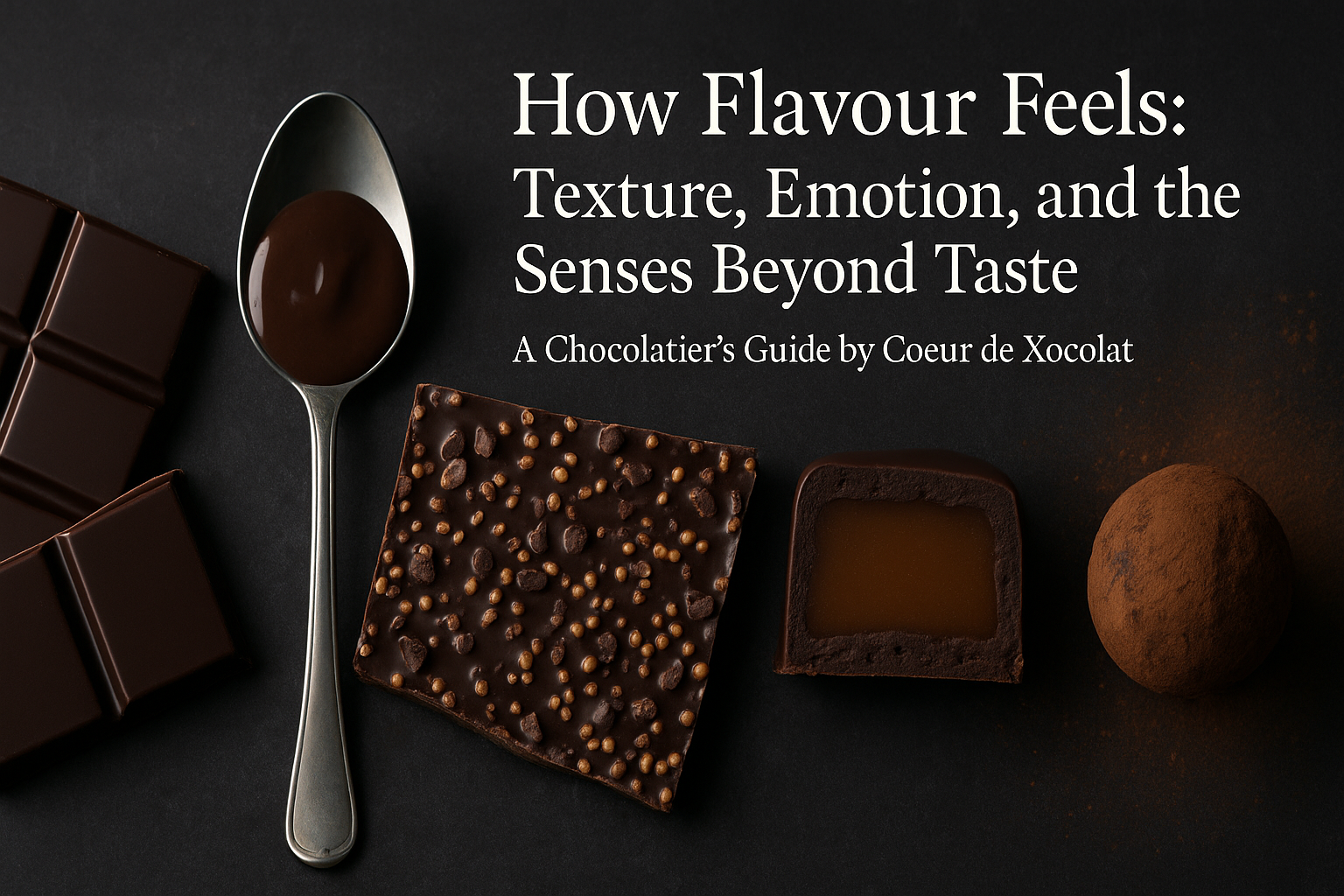
This time, let’s ask something even more curious: What does flavour feel like?
Because flavour isn’t just something you taste. It’s something you sense — with your hands, your memory, your mood, and sometimes even your whole body.
In the world of chocolate, texture, temperature, and touch are just as telling as aroma and taste.
Think of that first crack of a tempered shell… the slow melt of a ganache on your tongue… the gentle tug of nougat… the whisper of cocoa powder on a truffle’s surface.
These are feelings.
And feelings, when it comes to flavour, are the bridge between ingredient and experience.
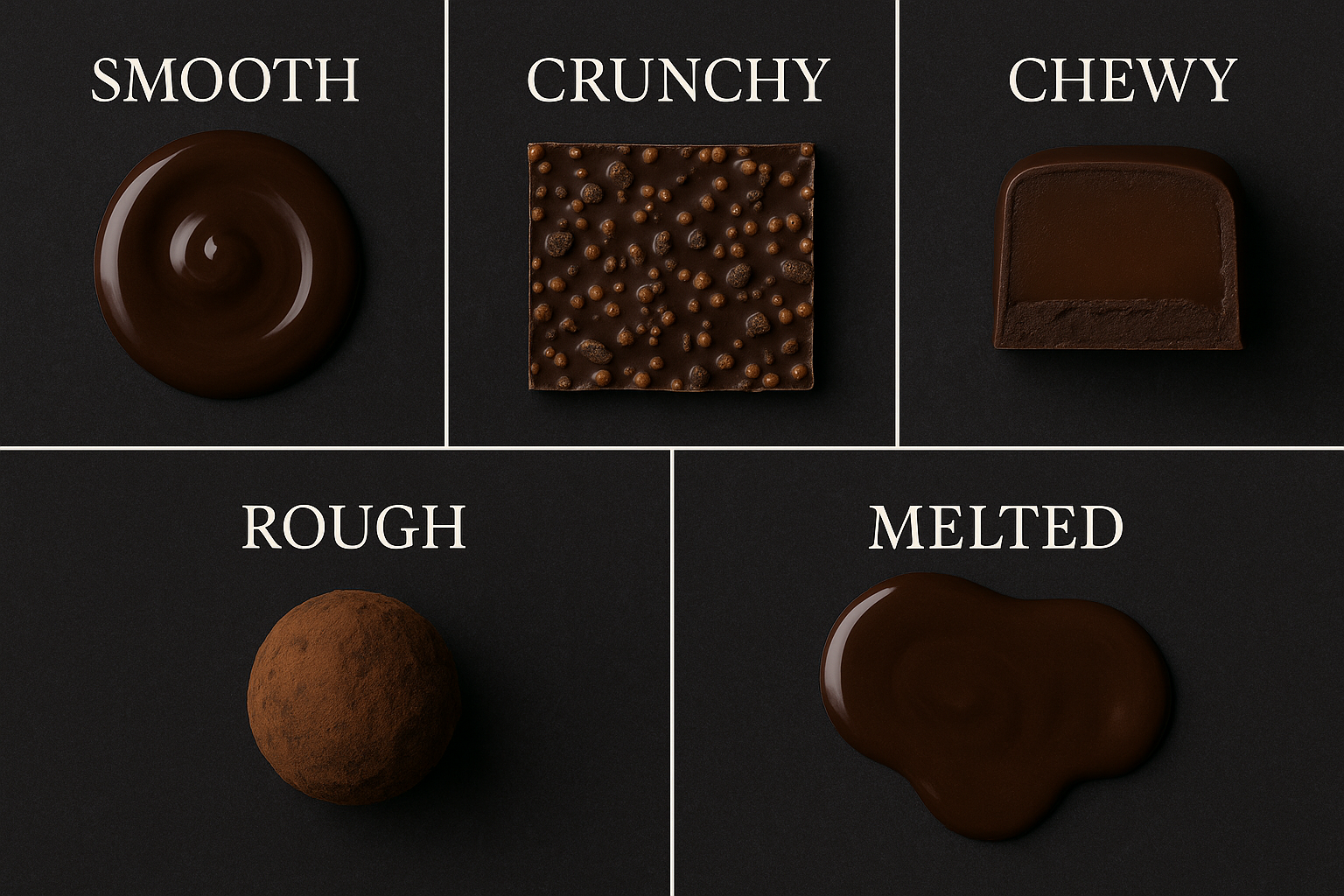 The Five Textures of Chocolate Emotion
The Five Textures of Chocolate Emotion
Just as we explored colours in language, here we dive into the physical language of chocolate — and how it speaks to us without saying a word:
1. Snap – The sound of clarity
A clean snap in a chocolate bar tells you it’s well-tempered, confident, ready to impress. It’s the handshake of the chocolate world. The auditory thrill sets expectation before a bite ever touches the tongue.
Emotion: Control, precision, promise.
2. Melt – The surrender of flavour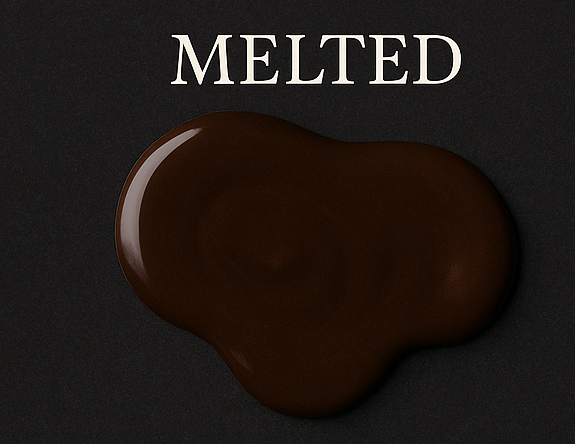
The best couverture melts slowly, deliberately. It blooms gently, letting flavour notes unfurl in waves — vanilla, red fruit, toasty wood. A fast melt might excite, but a slow one seduces.
Emotion: Intimacy, comfort, anticipation.
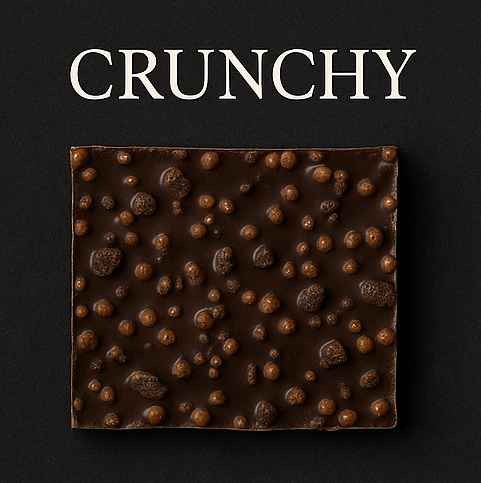 3. Crunch – Texture as punctuation
3. Crunch – Texture as punctuation
From cocoa nibs to praline shards, crunch adds rhythm — a pause, a surprise, a contrast. It breaks the pattern and reminds us that flavour is also a journey.
Emotion: Playfulness, curiosity, energy.
Chew – A taste you work for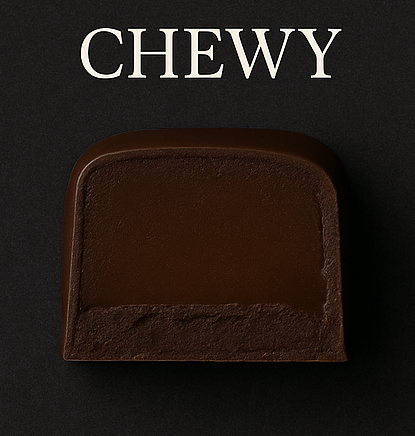
Some flavours ask us to linger — to chew, to coax out hidden notes in caramel, fig, spice. It’s the experience of effort rewarded.
Emotion: Groundedness, nostalgia, satisfaction.
5. Powder – The breath of cacao
A dusting of cocoa powder is more than decoration — it’s a sensory whisper. It coats the lips, sits on the palate like soft snow, earthy and ephemeral.
Emotion: Mystery, elegance, memory.
Synesthetic Chocolate: When Flavour Crosses the Senses
There’s a word for when our senses blend like this — synesthesia.
Some people see colours when they taste strawberry, or hear a musical note in a spoonful of honey. But even without synesthesia, flavour can feel like emotion.
Here’s what that might look like in chocolate:
A dark 80% single origin may feel like black velvet or burnt umber — complex, grounded, grown-up.
A milk chocolate with honeycomb might feel like sunshine, like amber light caught in a jar.
A white chocolate with miso or yuzu can surprise — the flavour equivalent of soft satin with a flash of electric yellow.
The Chocolate Taster’s Toolkit (Expanded)
In the first article, we invited readers to use colour language.
Now, add these tools to your sensory vocabulary:
What does it feel like on the tongue? (Silky? Furry? Gritty? Cooling?)
What emotion does it spark? (Joyful? Melancholy? Empowered?)
What mood would it match? (Firelight? First date? Rainy day reading?)
These questions don’t just make you a better taster — they make you a better storyteller.
Chocolate You Can Feel
Chocolate isn’t just a flavour. It’s an experience.
And experiences are multisensory — built on sound, scent, texture, memory, and mood.
Next time you unwrap a square, pause. Don’t just taste it.Feel it.
What does it whisper? What colour does it conjure? What story does it want to tell?
